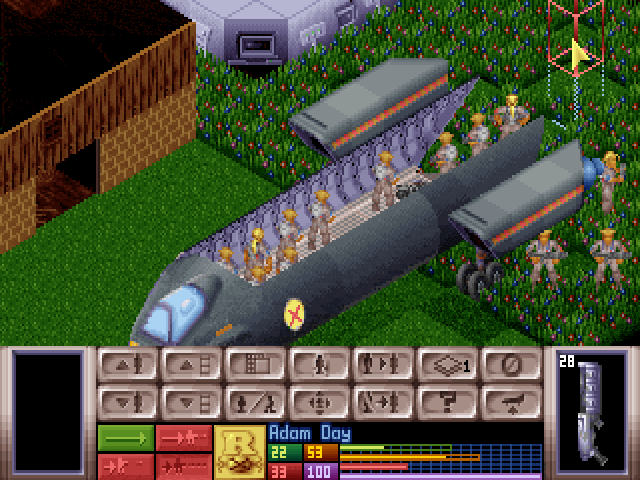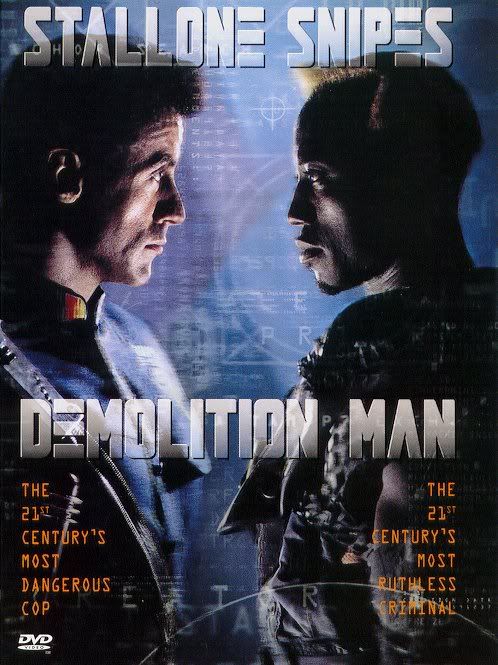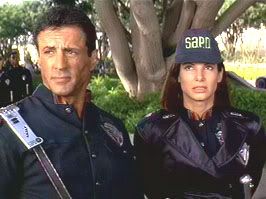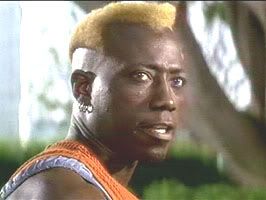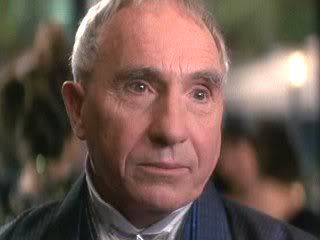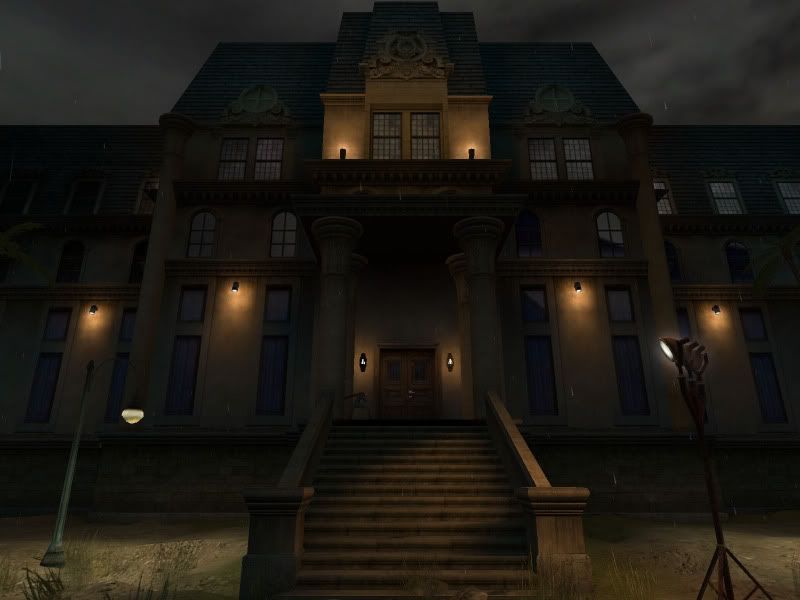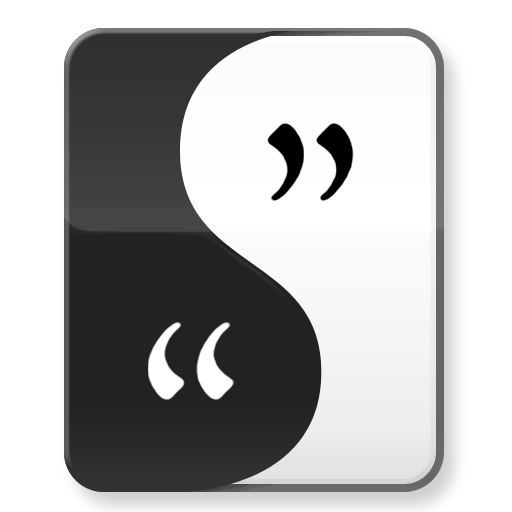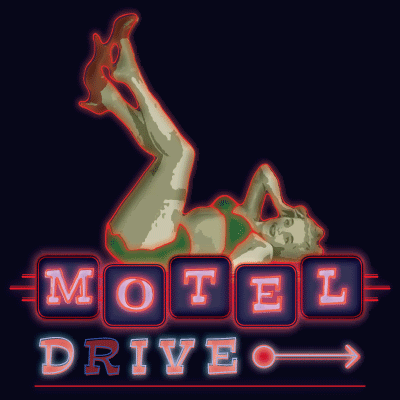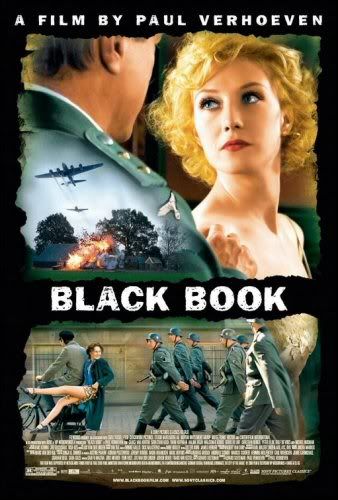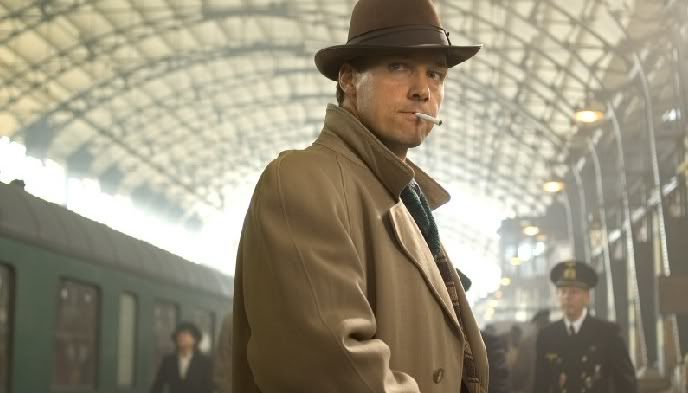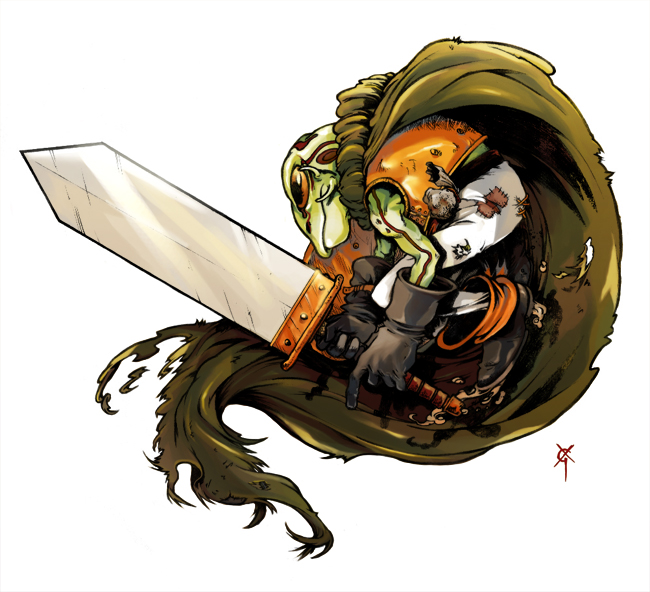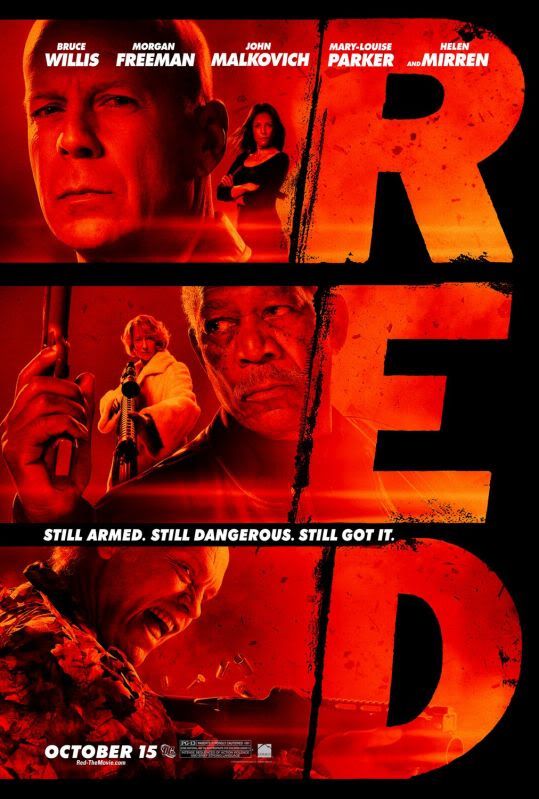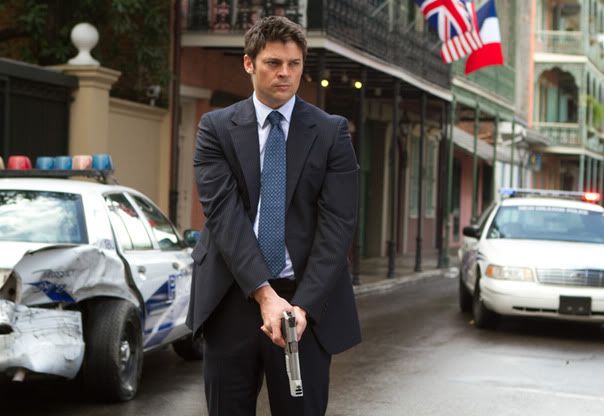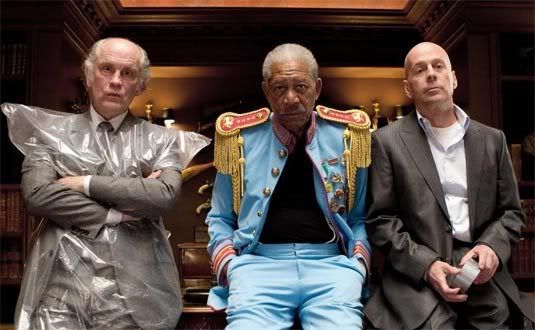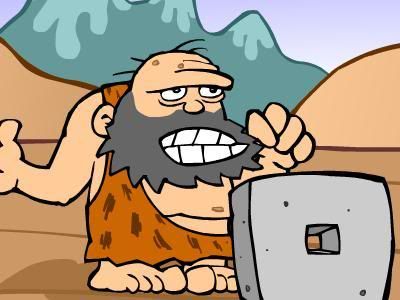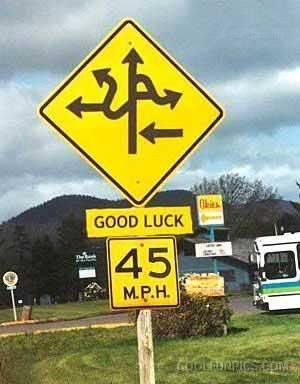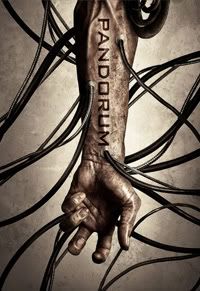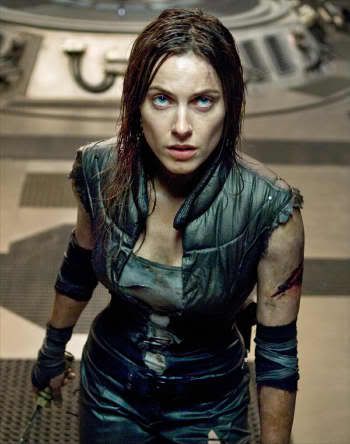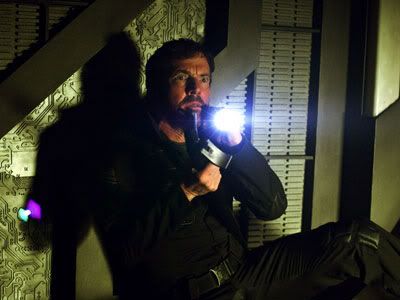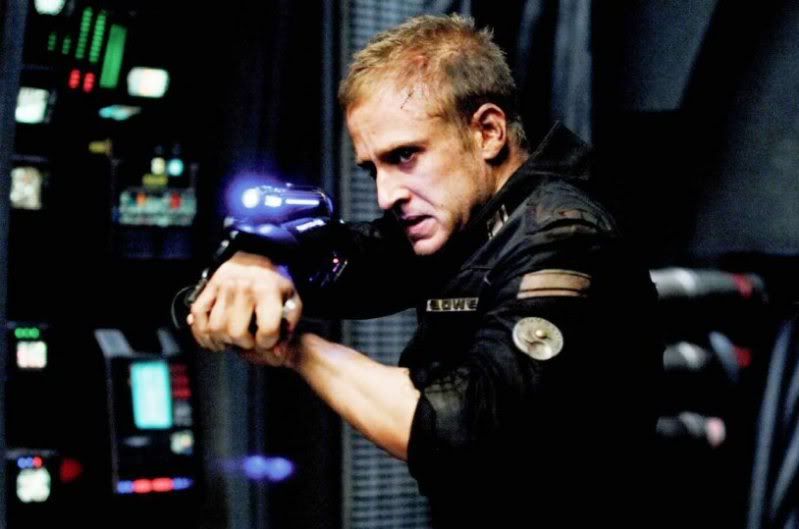
I didn't have the good fortune to make it into the beta for
World of Warcraft: Cataclysm but with the release of the latest Patch, I can now make some educated guesses as to how the different talents of my primary class, the Hunter, are going to fall together. I plan on using my secondary specialization to try out the other talents and offer some thoughts, as I've been playing the class and struggling to play it well since
Burning Crusade, especially since I met my wife. So here's the first in a series of guides to the Hunter talent trees. There may be a video once I've covered all three. Even if I don't have the swank accent of
TotalBiscuit. I'm also going to take it in turns to talk about the new abilities coming, in order: Cobra Shot, Aspect of the Fox and Camouflage. [spoiler]
The Survival Tree
Explosive Shot is the 'signature ability' of this tree. With most of our damage over time (dot) effects being Nature-based, a little Fire changes things up even if it's only a 2-second dot effect. The further you go down the tree, the more benefit you'll see from using this shot whenever it's off cooldown and you have the focus to fire it.
Into the Wilderness increases your Agility, the statistic you'll want the most of as you move down the tree. Not only does it translate into ranged attack power, it also increases crit chance and dodge, which is handy for both PvE and PvP. Finally,
Essence of the Viper increases all of the Hunter's elemental damage. That's Nature, Fire, Shadow, etc. So the more Mastery you have, the more danage your Serpent Sting, Explosive Shot and Black Arrow will do. Can you say Reforging? I thought you could. Let's get into the talents.
Hunter vs. Wild Carrying over from pre-patch days, this is a straight boost to Stamina. A good place for the first three points in a PvP build. For raiding, you may be better suited putting those points in...
Pathing Gone are the days of needing to switch your tracking to match whatever unfortunate mob you're filling with tiny shards of metal, be they arrows or bullets. Pathing replaces that micromanagment talent with a no-nonsense increase of ranged haste. Since Steady Shot now has a straight cast time of 1.5 seconds, I believe this has our regular attacks woven into our rotations more frequently rather than reducing that cast time. I'll test more to confirm this. Anyway, a PvE build would do well to fill this one out. PvP may benefit from this as well, but you may want to circle back to this after grabbing some other talents.
Improved Serpent Sting Basically, when you hit a mob with Serpent Sting it'll do instant damage on top of its dot effect. Keep in mind that this doesn't apply to Chimera Shot over on the Marksmanship tree, only to the initial application of Serpent Sting. Chimera Shot refreshes the dot only. Now, Multi-Shot is another story but I'm getting ahead of myself. Either way, grab this talent.
Survival Tactics While you're not going to be fooling most real players with Feign Death, mobs are another story. Reducing trap resistance is handy and being able to Disengage more often means more clever ways to get yourself out of a fix. To me, this is more of a solo PvE or PvP talent. Farming or grinding mobs is easier with crowd control they can't resist, and locking a player in place with an Ice Trap (see Entrapment) can make a big difference in arena situations. I say pick this up if you're levelling or heading into the arena, pairing it with...
Entrapment Turning what is normally an annoyance, either a slowing of movement or a lot of little poison effects, into a root is essential for arenas. The more crowd control you can subject your opponents to, the better. With crowd control making a comeback in
Cataclysm, this may also become necessary for raiding if you want to spec your Hunter as something beyond a pew-pew-pewing DPS class. I'd say this is pretty much a must-have for top-level PvP, and a 'maybe' for raiding.
Trap Mastery This, on the other hand, is good for all builds. Your ice-based traps last longer, your fire traps and Black Arrow do more damage and Snake Trap produces more snakes. Instill Indiana Jones' biggest fear on folks with this. This is one of those talents that provides a good immediate benefit and gets even better with talent synergy further down the tree.
Point of No Escape Keeping with the theme of crowd control's comeback, this little talent increases the chance of critical strikes on targets affected by our Ice or Freezing Traps. Again, this hasn't come up as much in the pre-expansion content, due in part to Wrath's raids being so focused on area-of-effect pulls instead of complex ones requiring crowd control, but looking to the future a raiding Survival Hunter is going to want this talent.
Thrill of the Hunt This talent helps with our focus management. Arcane Shot, Explosive Shot and Black Arrow having a chance to replenish 40% of their focus costs to me can be very helpful in a fight. More focus means you're using something other than auto shot or Steady Shot more often which means more damage. Good for any build.
Counterattack If you're unfortunate enough to get into melee, this can save you. When it activates, hit it and then Disengage. It's highly situational, though. With Trap Launcher you can CC an opponent before they close to melee range in arenas, and if you're quick enough you won't have to trade blows with an angry Death Knight. We're just not a melee class. For PvP specs, you may again want to circle back to this after you fill out the other, more universal talents.
Lock and Load This may be my favorite old talent in Survival. I can't recall if it included Arcane Shot pre-patch, because Arcane Shot used up too much mana. However, with the advent of Focus and situations in which your pet may be marginalized, weaving Arcane Shot into the old Explosive-Steady-Explosive dance when Lock and Load procs may increase your damage without clipping Explosive Shot's dot effect. Pick it up and save some points for T.N.T. to get the most out of it.
Resourcefulness Must-have for all Survival builds. Even if you don't use traps that often, reducing Black Arrow's cooldown means more elemental damage, more Lock and Load procs with T.N.T. and higher overall DPS.
Mirrored Blades Deterrence is our "OH CRAP!" button, and Mirrored Blades just makes it better. Not only are you essentially immune to damage, but you can reflect spells back at your attacker. Definitely a PvP talent especially for arenas. You'll need the points elsewhere for PvE builds because, frankly, if you're getting hit with spells often enough that you need to hit Deterrence, somebody's doing something wrong.
T.N.T. "I'm DY-NO-MITE!" Crank up the AC/DC and do tons more damage. With this talent, you don't need to drop a trap for Lock and Load to proc. It's not the guaranteed proc of the Freezing and Ice traps, but it happens often enough to boost your DPS. And in PvP situations it increases the tools at your disposal to put out more than enough hurt to put down the warrior frothing at the mouth to put an axe in your face.
Toxicology I'm not a statistician, so I don't know the numbers as to how often our dots deal critical damage. When it happens, it's good if they hurt more. Still, there are other talents requiring our attention, and with the other talents on this level you may find yourself only putting one point in here as you progress down the tree. If you're speccing for PvP, this is a good time to pick up Counterattack instead. PvP is more about burst damage than damage over time, after all.
Wyvern Sting An additional method of crowd control not bound to a trap. This will probably see more use in Cataclysm's raids than it does in Wrath's, and for PvP putting a healer to sleep can really mess up the other team's day. Not to mention it unlocks Black Arrow. Get it.
Noxious Stings Makes your Serpent Sting more damaging and Wyvern Sting more annoying. It almost makes Wyvern into a miniature Unstable Affliction, which Affliction Warlocks can tell you piss people off to no end. Definitely worth its points.
Hunting Party Reduced in cost to 1 talent point, this now gives a raid-wide buff to attack speed as well as giving you even more Agility. Are you really going to pass up that big a bargain? No? Didn't think so.
Sniper Training In most raid situations, you're likely to be standing in one place. Some fights do have you moving around, which I'll talk about more when I discuss Aspect of the Fox. But doing more damage when your Kill Shot crits and more overall with Steady & Cobra Shot is definitely a benefit to the party in PvE situations. When it comes to PvP, though, this talent is a bit more questionable. Points normally reserved for here could go in Mirrored Blades, Toxicology or even up in Pathing or Point of No Escape if you haven't gotten them already. In battlegrounds you may find yourself occasionally standing still, but in arenas if you stand still too long you end up dead.
Serpent Spread My favorite new talent. I call it the Oprah talent. "You get a Serpent Sting! YOU get a Serpent Sting! EVERY BODY GETS A SERPENT STING!!" Note that with Improved Serpent Sting, your Multi-Shot will now be doing its damage, Serpent Sting's improved damage and also applies the dot effect. TO EVERYTHING IT HITS. You shouldn't need a math degree to see this translates into big numbers. I'd say this is a must-have for PvE builds. Battleground builds may also benefit from this especially when the other faction rushes your control point. Finally, arena builds aiming for the 5v5 bracket can use this well when the other team comes out of the gate, but this counts on them staying close enough for Multi-Shot to hit everybody. I've yet to test it in that situation, but I'll keep you posted.
Black Arrow The pinnacle of Survival. Without this shot, quite frankly, half of these talents aren't worth taking. It applies shadow damage, enhanced by Essence of the Viper and other talents, as well as giving a change for Lock and Load to proc. Worth both the talent point and its focus cost. So, those are the Survival talents in a nutshell and based on my personal experience and opinions. Now for some speculation!
Cobra Shot
With the same casting time as Steady Shot but applying Nature damage and increasing Serpent Sting duration, Cobra Shot looks to be an interesting alternative to our old standby. I imagine this shot will crop up more in Beast Mastery and Survival rotations than Marksmanship. Beast Masters won't have to worry about refreshing Serpent Sting and can reserve their focus for Kill Command. Marksmen will be using Steady Shot as Chimera Shot will do more damage than Cobra and fill the "refresh the Sting" role. Survivalists, with their increased elemental damage, will want Serpent Sting to last on their targets as much as possible. Next: Marksmanship and Aspect of the Fox. [/spoiler]
Blue Ink Alchemy
